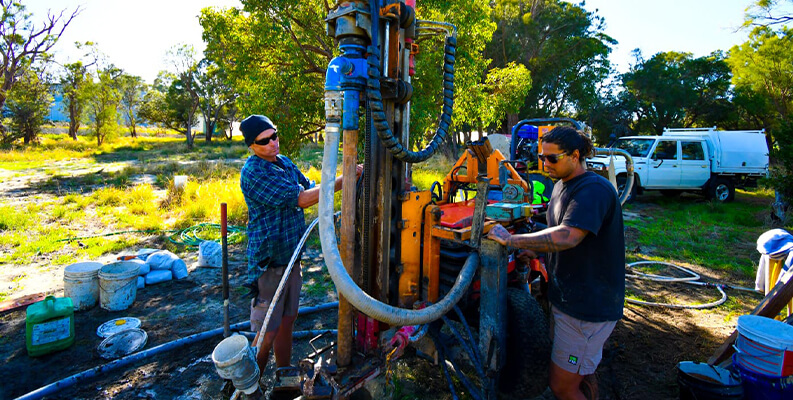How to Install a Submersible Bore Pump Like a Pro?
Submersible bore pumps are a crucial part of the household. In areas where groundwater extraction is necessary for agricultural, residential, or commercial purposes. Proper installation is essential to ensure longevity, efficiency, and functionality of water management systems. At SouthWest Water Bores, we are equipped to handle all kinds of bore pump installations and repairs in Rockingham and surrounding areas. In this blog, we are going to take you step-by-step through the process of installing a submersible bore pump.
Understanding Submersible Bore Pumps
A submersible bore pump is designed to work underwater, making it the best choice for deep boreholes. These borepumps are highly efficient because they push water to the surface instead of pulling it, reducing energy consumption. However, the only condition for it to work properly is to correctly install it.

Steps to Install a Submersible Bore Pump
- Prepare Your Tools and Materials
- The submersible bore pump
- PVC or steel pipes
- Electrical cables
- Cable ties and waterproof cable joints
- Valve
- Safety rope or stainless steel wire
- Bore cap and clamps
- A control box or starter panel (for motor control)
- Assess the Borehole
- Attach the Pump to the Pipe
- Connect the Electrical Cable
- Lower the Pump into the Borehole
- Secure the Bore Cap
- Connect to the Control Panel
- Test the Pump
Before beginning, collect the necessary tools and materials. You are going to need:
Having everything on hand will save your time and ensure the process goes smoothly.
Before installing the pump, check the borehole to ensure it is free from dirt and debris. Measure the borehole depth and diameter to confirm compatibility with your pump. Check the water level, as this will determine the pump’s location within the bore.
Securely connect the submersible pump to the delivery pipe using appropriate clamps. Install a non-return valve on the delivery pipe to prevent water from flowing back into the pump. This step is critical for maintaining consistent pressure and prolonging the pump’s lifespan.
Submersible pumps require a waterproof electrical cable for power. Connect the cable to the motor using waterproof joints and ensure it is securely attached to the delivery pipe with cable ties at regular intervals. This prevents the cable from tangling or getting damaged during installation.
Carefully lower the pump into the borehole using a safety rope or stainless steel wire. Avoid dropping the pump suddenly, as this can damage both the pump and the borehole. Ensure the pump is kept freely without resting at the bottom of the borehole.
Once the pump is at the right depth, secure the bore cap to seal the top of the borehole. The cap prevents contaminants such as dirt, debris, or insects from entering the borehole and protects the electrical connections.
Attach the electrical cable to the control box or starter panel. This allows you to operate the pump efficiently and provides overload protection for the motor. Follow the manufacturer’s wiring instructions carefully to avoid errors.
After completing the installation, test the pump by switching it on. Check the water flow, pressure, and overall performance. Monitor the system for any leaks or errors in operation.
Maintenance Tips for Your Submersible Bore Pumps
Regular maintenance can extend the life of your pump and prevent costly repairs:
- Check the system annually for any signs of wear and tear.
- Clean the pump to remove any sediment buildup.
- Test the control panel and electrical connections regularly.
- Ensure the borehole remains sealed to avoid contamination.
Conclusion
Installing a submersible bore pump might seem like a daunting task, but with the right tools, knowledge, and experience, you can achieve the right execution resulting in a reliable water management system. Proper installation not only enhances the pump’s efficiency but also ensures its durability, making it a worthy investment. If you have any queries about submersible bore pumps, reach out to us.




